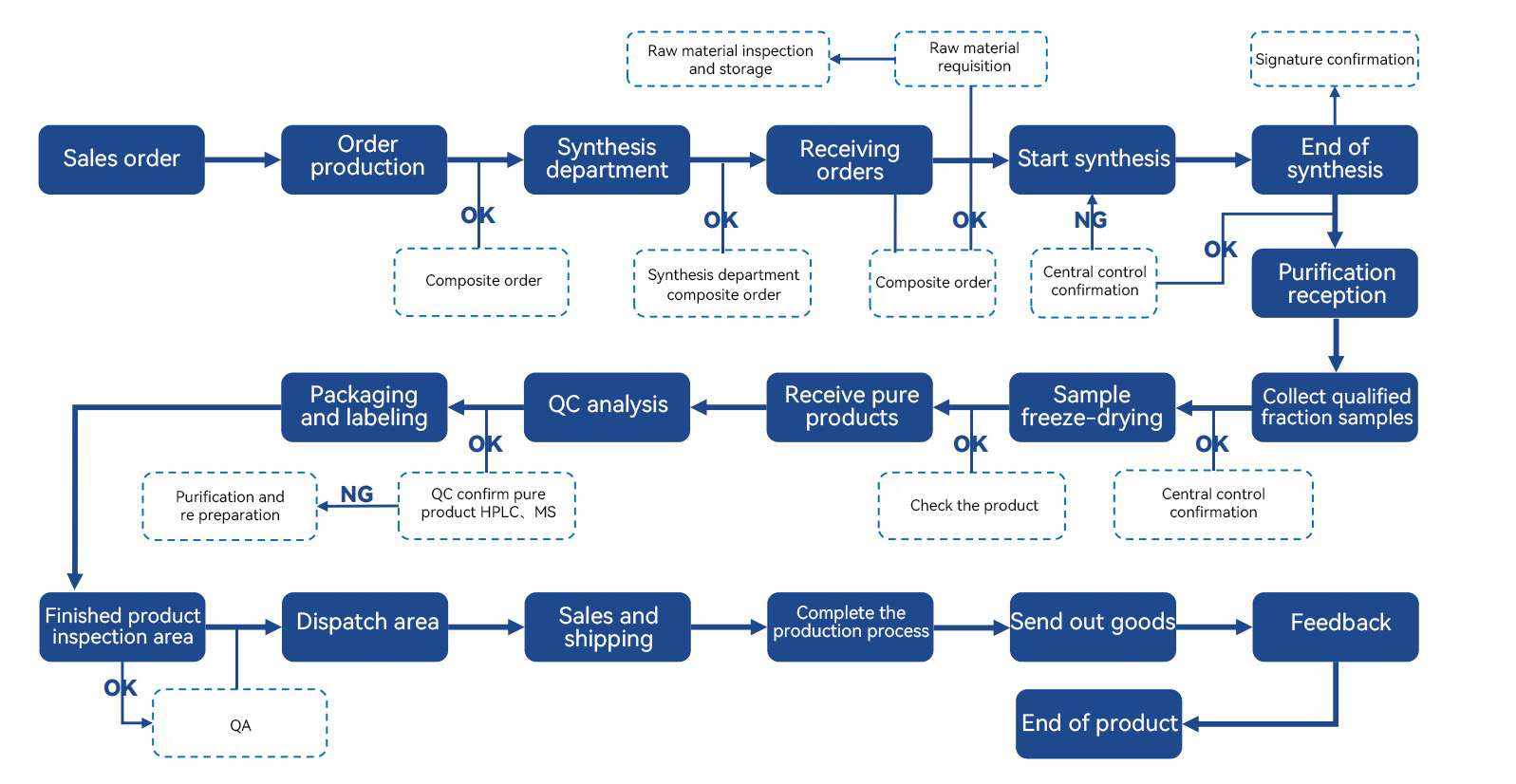Multiple pregnancy synthesis
Peptides are bioactive substances that are related to various cellular functions in the body. Their molecular structure is between amino acids and proteins, and they are compounds formed by the binding of multiple amino acids in a certain order through peptide bonds (- NH-CO -). A compound formed by dehydration condensation of two amino acid molecules is called a dipeptide, and similarly, there are also tripeptides, tetrapeptides, pentapeptides, and so on, up to the nonapeptide. A compound typically formed by dehydration condensation of 10-100 amino acid molecules is called a polypeptide. Peptide customization service: refers to peptide synthesis services that meet specific customer needs by synthesizing peptides according to different requirements such as sequence, purity, molecular weight, salt composition, etc. Confirm the molecular weight of the crude product using a mass spectrometer to ensure its accuracy. Then, purify the crude product using a high-performance liquid chromatography system, and concentrate and freeze dry it to obtain a powdered high-quality peptide.
Multiple pregnancy synthesis
The company uses a high-performance liquid chromatography system and a reverse C18 packing column for separation and purification.
Divide into the following steps:
1) Identification: Take a small amount of crude peptide and send it to mass spectrometry to confirm whether it contains the target peptide (Yes, confirm the retention time of the target peptide on the C18 column, i.e. peak time, through analysis chromatography; No, synthesize the crude peptide again)
2) Dissolve: Use ultrasonic assisted dissolution, generally selecting 90% water+10% acetonitrile (methanol or isopropanol). Difficult to dissolve, according to the ratio of acidic and alkaline amino acids in the peptide sequence, if the proportion of alkaline amino acids is high, appropriate acetic acid or trifluoroacetic acid should be added to aid dissolution; If the proportion of acidic amino acids is high, it is recommended to add appropriate ammonia solution to help dissolve. If the proportion of insoluble and hydrophobic amino acids is high, DMSO (dimethyl sulfoxide) should be added.
3) Filtration: The dissolved crude liquid is filtered through a 0.45 micron membrane (to protect the preparation column) and then set aside for use.
4) Sample loading: Using a high-performance liquid phase preparation system, input the liquid sample into the preparation column.
5) Elution: Based on 1), obtain the elution gradient and use the difference in polarity between peptides of different lengths to separate impurity fragments in the peptides.
The advantages of using high-performance liquid chromatography system: higher resolution than other chromatographic methods; The C18 preparation column used has high column efficiency, long service life, good reproducibility, and can be reused repeatedly; Fast speed and high efficiency, each sample can be purified in just over ten or tens of minutes; Reverse phase chromatography is widely used and the technology is relatively mature, with good selectivity for almost all types of organic compounds





























